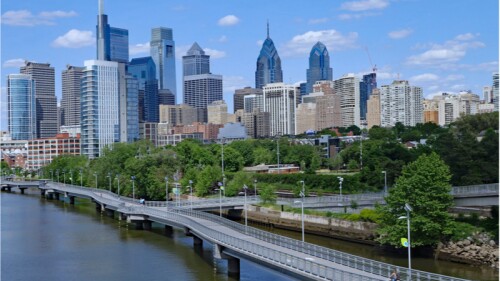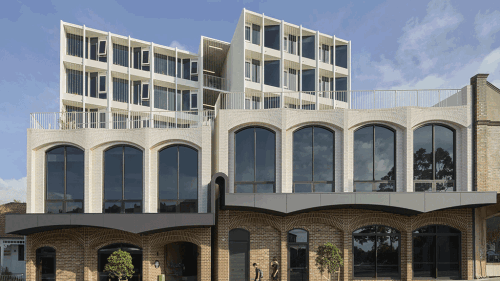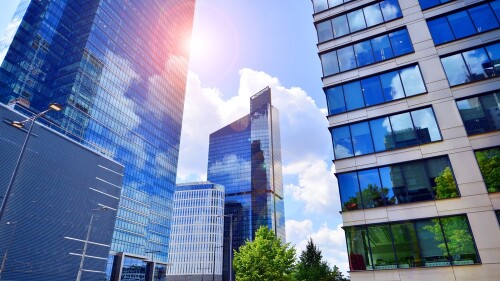For nearly 20 years, the George Kaiser Family Foundation (GKFF) has concentrated on creating opportunities for disadvantaged children and families in Tulsa by supporting early childhood education, efforts to prevent teen pregnancy, and a host of other social services.
GKFF also has supported placemaking to create a more vibrant city with the aim of generating more investment interest and opportunities for residents. Spearheading the revitalization of downtown Tulsa’s Brady Arts District neighborhood with apartments and the Guthrie Green performance plaza near the Woody Guthrie Center stands out among its endeavors.
But it could be argued that a park known as A Gathering Place for Tulsa under construction along the eastern bank of the Arkansas River two miles (3.2 km) south of downtown is not only GKFF’s most ambitious development effort in the city, but also one of the biggest greenway projects under development from scratch in the United States.
After spending almost a decade assembling about 100 acres (40 ha), mapping out a blueprint with celebrated landscape architecture firm Michael Van Valkenburgh Associates (MVVA), and soliciting community feedback, GKFF and civic leaders two years ago broke ground on the first phase of the Gathering Place.
When it opens in late 2017, the initial phase of the park will encompass nearly 67 acres (27 ha) and feature 19 distinct elements, including a great lawn, gardens, land bridges over the busy Riverside Drive thoroughfare, a recreational pond and wetlands, a lodge, playgrounds, sports courts, and trails. All are geared toward family enjoyment and education while building a stronger city, explains George Kaiser, a Tulsa energy mogul and philanthropist who founded the foundation with a $4 billion endowment.
“Like most cities, Tulsa has become siloed over the years by geography, occupation, economic status, and race, and there’s little true sense of community,” he says. “What we’re trying to do is create a place where people from different backgrounds and experiences gather and really get to know one another.”
Under the first phase of the plan, GKFF donated land valued at $50 million to the River Parks Authority, which oversees a network of recreational trails and land adjacent to the Arkansas River throughout Tulsa County. It also handed over $150 million for construction while roughly 70 corporations, individuals, and other donors have ponied up $150 million.
Ultimately, GKFF is looking to raise an additional $50 million and use $100 million of the funds to establish an endowment to operate the park, says Jeff Stava, who is overseeing the park’s development and is chief operating officer for the Tulsa Community Foundation. Separately, the city of Tulsa spent around $65 million to shore up roads, sewers, and other infrastructure in and around the site to avoid tearing up the park to make the improvements later, adds Stava. Beyond providing the community with various activities and programs, he sees the park as a vital marketing tool for the city.
“People now have a choice and can work pretty much anywhere,” he says. “So our corporate citizens saw the Gathering Place as an opportunity to put an actively programmed park in the center of Tulsa, and it will become a way for them to recruit talent.”
GKFF held an international competition for architects and sought MVVA’s participation shortly after the firm had submitted a winning proposal to redesign the grounds surrounding the St. Louis Arch. Despite the demands of the St. Louis project, MVVA officials knew they could not pass up the chance to work on the Gathering Place, says Michael Van Valkenburgh, president and chief executive officer of MVVA.
“We love waterfront parks and were just kind of blown away with this parcel of land that they had assembled,” says Van Valkenburgh, whose firm also designed the Brooklyn Bridge Park, among other projects. “It’s lodged right in the heart of a thriving neighborhood that’s bereft of open space.”
Knitting together different properties into a continuous park experience and bridging Riverside Drive posed their own set of design challenges, acknowledges Christopher Gates, an associate principal with MVVA and the Gathering Place’s project manager. But with six public meetings and a website that encouraged comment through a good part of the design phase, discovering the right mix of programs in the Gathering Place amid a wide range of community feedback also put designers to the test.
“When people come to the park, what are they going to do? What are they going to see? And what appeals to them and what doesn’t appeal to them—a lot of that was settled early in the conceptual plan and schematic design phase,” Gates says. “We spent a lot of time trying to find the right balance of programs for this park with the input from different groups.”
MVVA focused on creating a diverse, undulating landscape and blurring the edges of the park to make it feel larger than its already impressive footprint as people move through it, Gates adds.
“In this instance, landscape is so much about the sequence of experiences and revealing elements, whether those are interesting views or a much more intimate garden experience,” he says. “So all of that comes into play in terms of the scale of the space, the length of the views, and the up-and-down movement that’s in almost all of our parks.”
A new 45,000-square-foot (4,200 sq m) Tulsa Children’s Museum Discovery Lab will anchor the second phase on the park’s southern end, although a groundbreaking date has yet to be determined. The museum now operates near downtown, and the Discovery Lab will provide hands-on science, technology, engineering, and math (STEM) and health and wellness educational opportunities. A third phase farther in the future is projected to connect the park to Tulsa’s shopping and entertainment Brookside District and could include commercial development.
“We wanted to build something more than a traditional park with just a few playing fields on it—we wanted to build something distinctive,” Kaiser says. “It will be the most significant park built in the U.S. in decades.”
Joe Gose is a freelance writer and editor based in Kansas City, Missouri. His work has appeared in The New York Times, Investor’s Business Daily, and Barron’s.
For more information on urban greenways and linear parks and park connectivity, sign up for updates on the 10-Minute Walk Campaign or follow #10MinWalk. The 10-Minute Walk Campaign, a national movement led by the Urban Land Institute, The Trust for Public Land, and the National Recreation and Park Association, is promoting the bold idea that everyone living in urban America should live within a 10-minute walk of a park.







